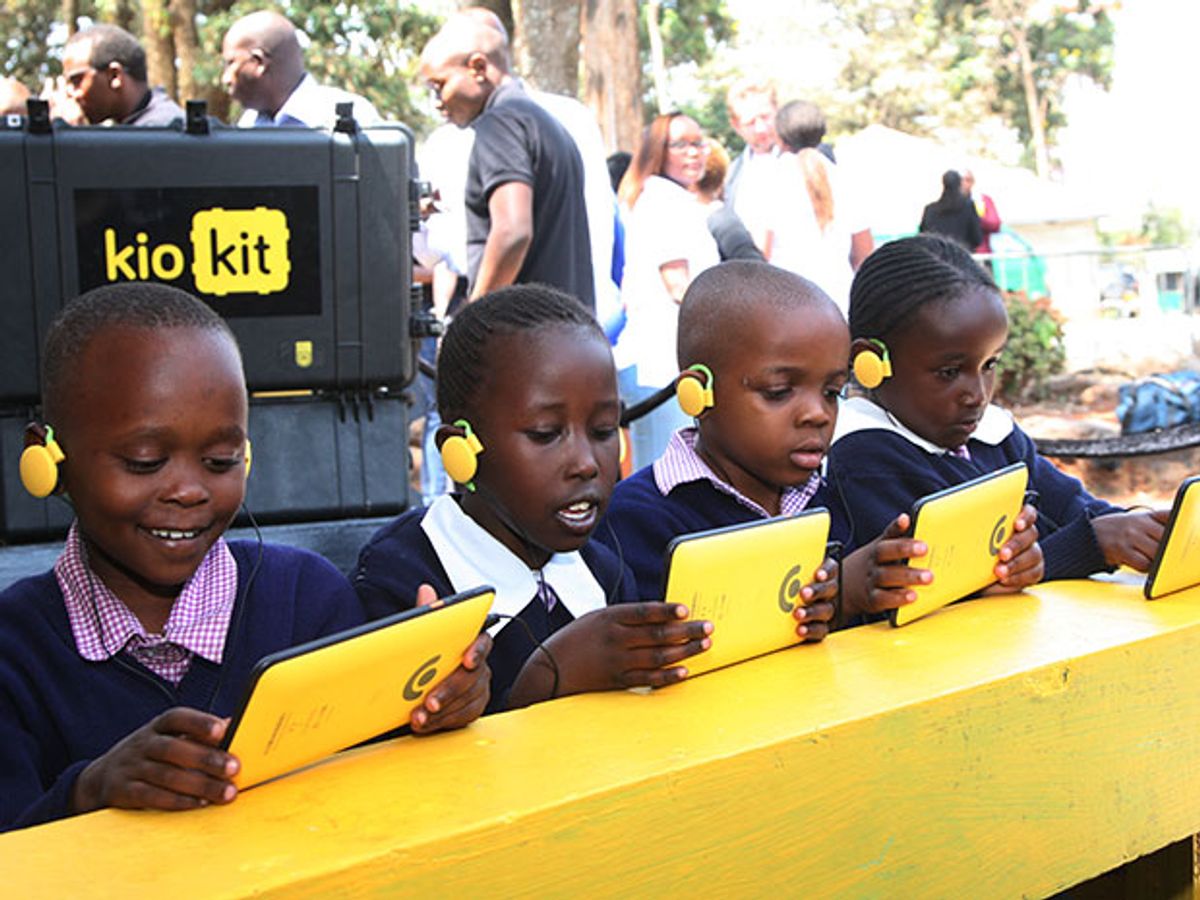Editors Note: This week IEEE Spectrum is covering CeBIT, the enormous information and communications technology show that takes place annually in Hanover, Germany. For up-to-the-second updates, you can follow our CeBIT Ninja, Stephen Cass, on Twitter (@stephencass), or catch daily highlights throughout the week here.
Founded in 2013, BRCK is a Kenyan company that makes a rugged router designed for places with poor communications or power infrastructure. It can act as a traditional WiFi access point, but if a wired connection goes out or is simply not available, the router can switch over to cellular networks. Power outages are compensated for by an 8-hour battery. But now the company has gone beyond its basic product with the launch in September 2015 of BRCK Education and its US $5,000 Kio Kit.
The Kio Kit is an almost literal turnkey connected classroom: A water-resistant trunk-sized travel case contains 40 Kio 7-inch tablets and a BRCK router. The travel case wirelessly each charges each tablet, and the whole unit can be charged from either a wall outlet, solar power, or even a car battery. The tablets come pre-loaded with educational software chosen by the purchaser, which can be a mix of free and paid material from providers such as the Kahn Academy or eKitabu, a Kenyan e-book company. Updates can provided through the cloud when connectivity is available.
BRCK’s business development manager, Alex Masika, was at CeBIT to present early results from Kio Kit deployments at the invitation of the German Federal Ministry of Economic Cooperation and Development. Since January, Kio Kits have been sold into schools in Kenya, Tanzania, and the Solomon Islands, with additional orders coming in from Sudan, and queries from many other countries around the globe including the United States.
“The impetus for BRCK Education was the lack of education around the world, with hundreds of millions of kids going without,” says Masika. Educational content was available, but existing set of tools, such as typical consumer-grade tablets, “wasn’t able to address the challenges faced in Africa with power and connectivity,” he adds. Even something as basic as charging multiple mobile devices proved difficult in many schools, so BRCK tried to develop an all-in-one-solution with an emphasis on durability. The tablets are designed to survive a drop of least 70 centimeters, and “we haven’t had report of a single broken screen yet,” says Masika. Other touches—such as color coding the headphones yellow to make them easy to identify when giving instructions—were designed to make the system as hassle-free for teachers as possible.
Masika, who is currently looking for investors and industry partners who can help scale up production and distribution of the Kio Kit, notes that one thing he’d like to see is Kio Kits popping up in places like refugee camps along with other emergency infrastructure like tents. In the meantime, the Nairobi-based Kio Kit and BRCK engineers and designers are continuing to improve the system based on user feedback.
Stephen Cass is the special projects editor at IEEE Spectrum. He currently helms Spectrum's Hands On column, and is also responsible for interactive projects such as the Top Programming Languages app. He has a bachelor's degree in experimental physics from Trinity College Dublin.



